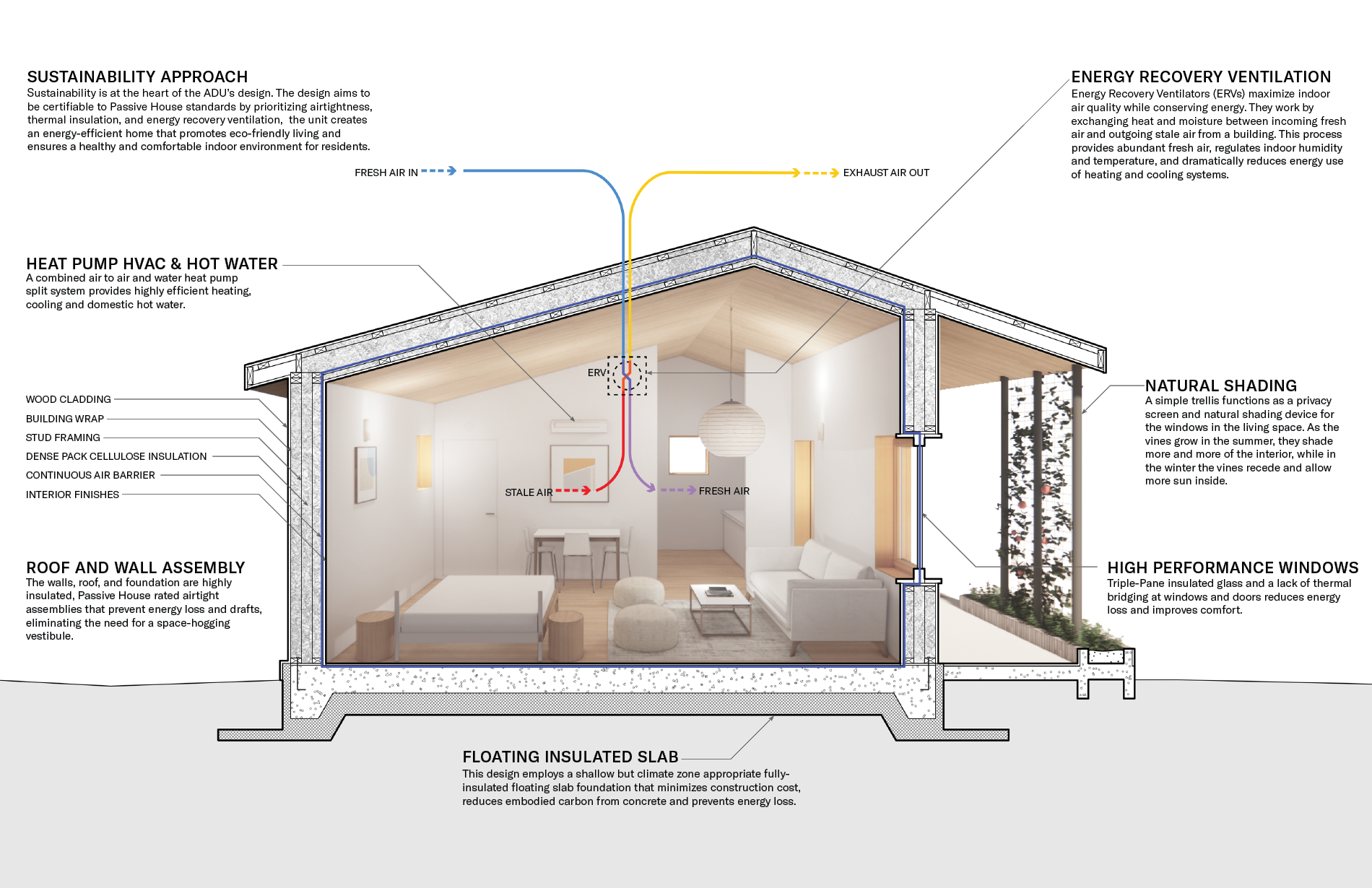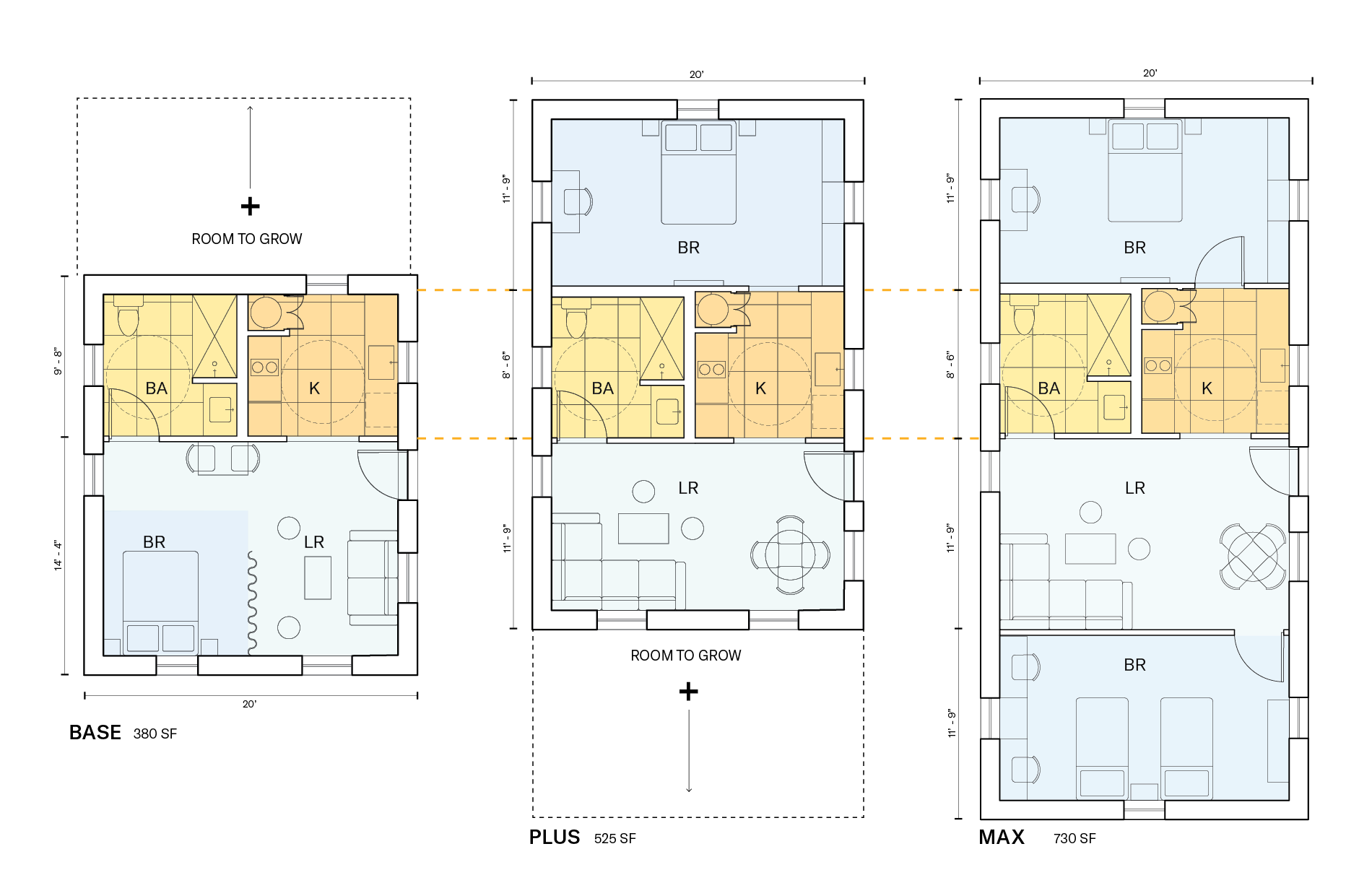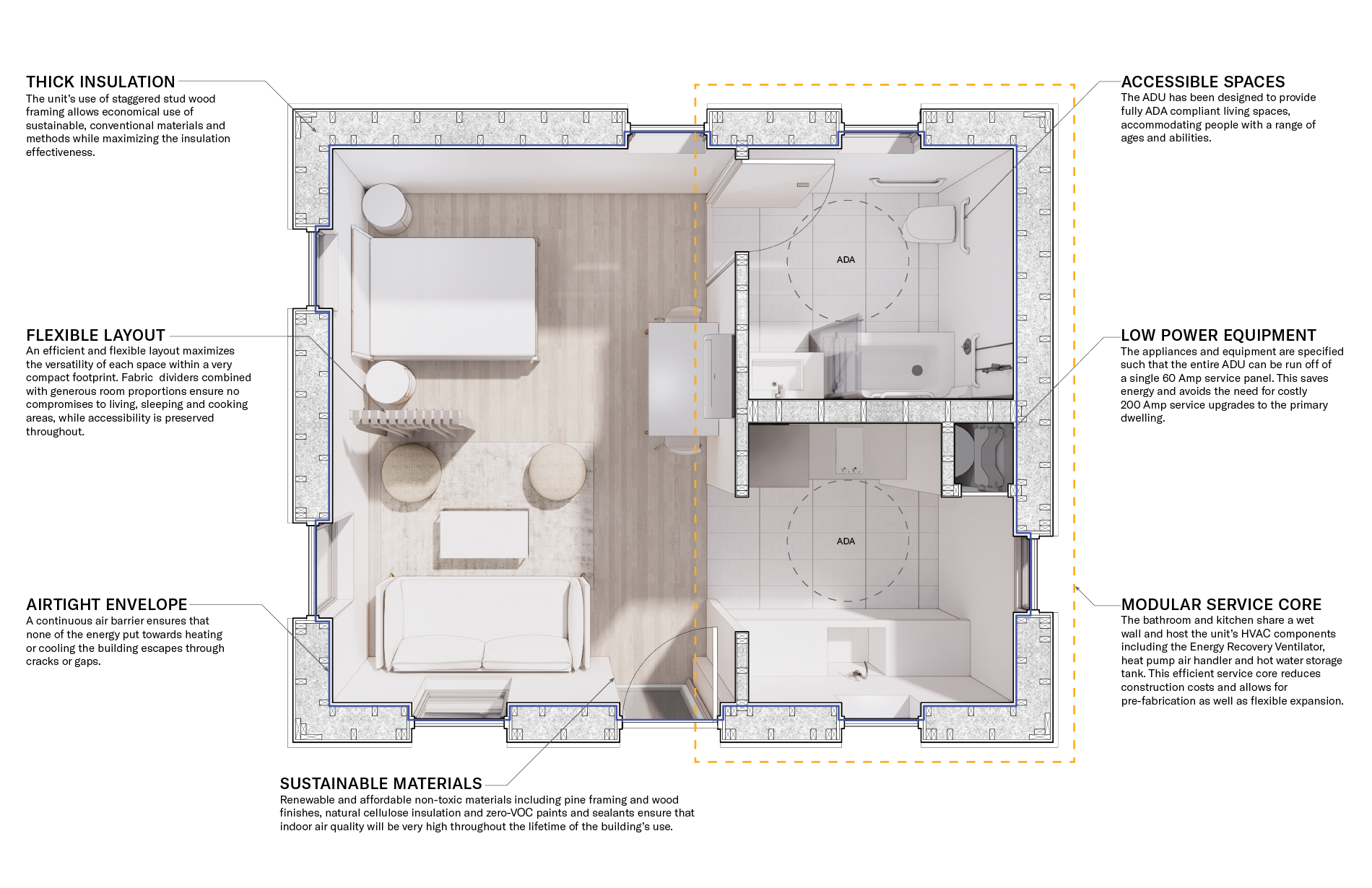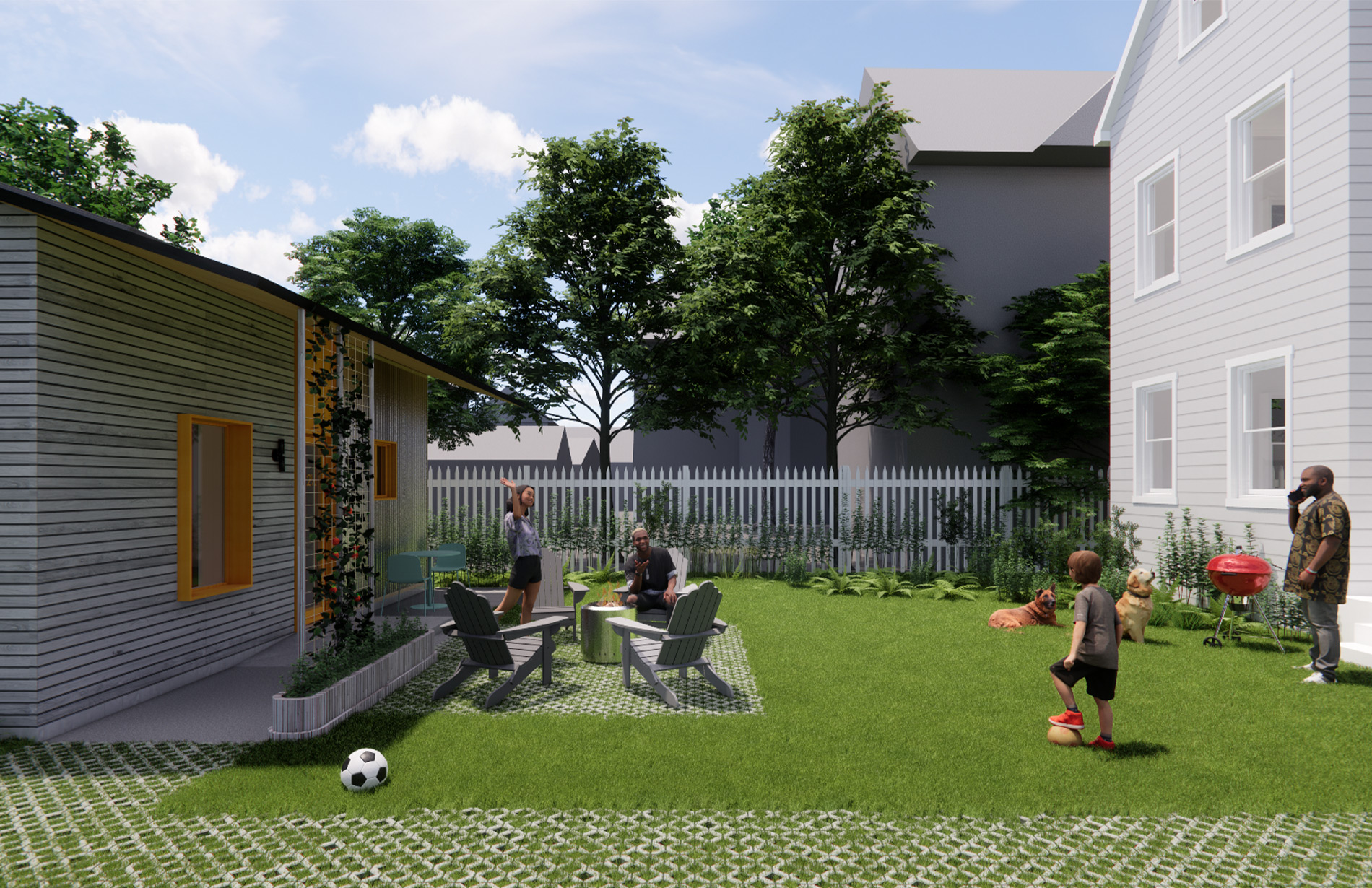Sustainable ADUs: Coming to a Backyard Near You
2023.09.13

Accessory Dwelling Units (ADUs) are gaining popularity in North American cities as a response to several housing market challenges. The prevalent low-density housing model, reliant on cars for most trips, poses environmental and infrastructural issues, as it drives up costs and limits supply, especially in high-demand areas.
ADUs address these problems by increasing density, promoting alternative transportation methods, utilizing existing infrastructure, boosting housing supply, and offering affordable options for individuals who cannot afford or prefer not to rent or buy a whole single-family house. ADUs also contribute to neighborhood diversity without significantly altering the aesthetics of single-family neighborhoods. Implementation of ADUs is flexible, with municipalities encouraging standalone units as well as renovations of the primary building to accommodate another unit, making them an increasingly relevant solution to housing challenges.

Despite their potential benefits, ADUs come with several significant challenges. The responsibility for ADU construction typically falls on individual homeowners, who may struggle with affordability issues, and even with rental income, it can take a long time to recoup costs. Construction can be complex, particularly for those with no prior experience. Resistance from homeowners and neighborhoods can arise due to concerns about noise and aesthetics. Additional unit construction can strain existing utilities, necessitating infrastructure upgrades. Evolving energy codes may require higher standards than the primary home. Additionally, the small size of ADUs can lead to higher construction costs per square foot due to the lack of economies of scale. Overcoming these obstacles is crucial for realizing the full potential of ADUs.
ADUs address these problems by increasing density, promoting alternative transportation methods, utilizing existing infrastructure, boosting housing supply, and offering affordable options.
Circular developed a sustainable, accessible, flexible prototype for an ADU that could be built for $125,000 as a part of a statewide New York subsidy program to increase housing variety and affordability. Our design for the Excelsior ADU is based on Passive House standards for sustainability, comfort and indoor air quality. In addition, we focused on construction affordability, accessibility, and adaptability.

The Excelsior ADU employs cost-effective construction methods and emphasizes sustainability. It utilizes local, renewable materials like pine wood and non-toxic cellulose insulation, reducing environmental impact. The floating slab foundation minimizes excavation and concrete costs. Staggered stud framing and thoughtful dimensions minimize waste.

The modular infrastructural unit houses the kitchen and bathroom, as well as key Passive House equipment like the energy recovery ventilator and heat pump. This approach reduces infrastructural costs by minimizing plumbing and electrical runs and allows for expansion centered on the module between base, plus, and max units, enabled by non-destructive detailing at key junctions.

It's designed with universal accessibility in mind, making it suitable for aging residents. The ADU's design blends modern sensibilities with familiar materials and forms to harmonize with its domestic surroundings. We hope that this approach will alleviate community concerns of aesthetic intrusion by clearly showing the benefits of the ADU.

The Excelsior ADU employs cost-effective construction methods and emphasizes sustainability.
Accessory Dwelling Units (ADUs) have emerged as a promising solution to address various housing challenges in North American cities. They increase density, promote sustainability, contribute to housing supply, enhance affordability, and diversify neighborhoods without compromising their aesthetics. The Excelsior ADU demonstrates how ADUs can drastically increase sustainability by using Passive House principles and to create a home that is affordable, flexible, accessible, and comfortable. By addressing these challenges, we believe the design has the potential to play a significant role in reshaping the housing supply towards an inclusive and healthy future.
The Excelsior ADU demonstrates how ADUs can drastically increase sustainability by using Passive House principles and to create a home that is affordable, flexible, accessible, and comfortable.
Relevant Projects



